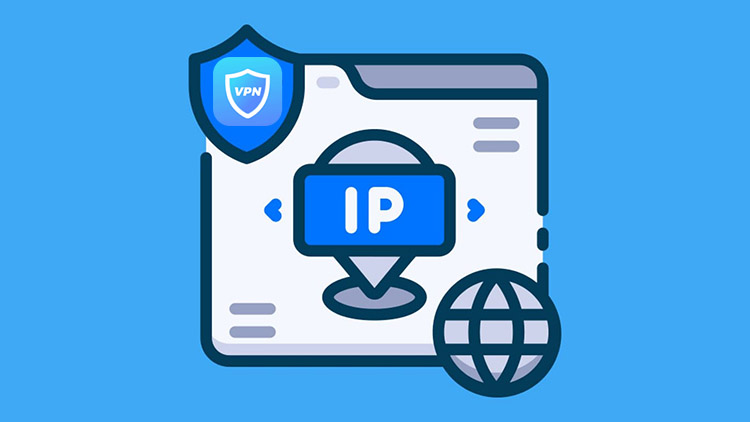The Dark Web is often discussed negatively and associated with illegal activities, but in reality, it's much more than that. It can be said the source of many fantasies since it provides us opportunities to access the hidden part of the internet that is unavailable through common tools. This makes the Internet mysterious and more or less inspires people's truthful beliefs about the Internet.
So, what is the dark web, is it safe, and how to access the dark web safely? You will find all the answers in this article.

What Is the Dark Web?
In short, the Dark Web is a small, specialized segment of the Deep Web, accessible only through specific browsers like Tor. It's known for its heightened privacy and anonymity, hosting a mix of both legal and illegal activities. Unlike the surface web, dark web sites are not indexed by standard search engines and often use .onion domains, making them obscure and harder to trace.
Now, let’s dive deeper into the dark web definition if you want to know more details:
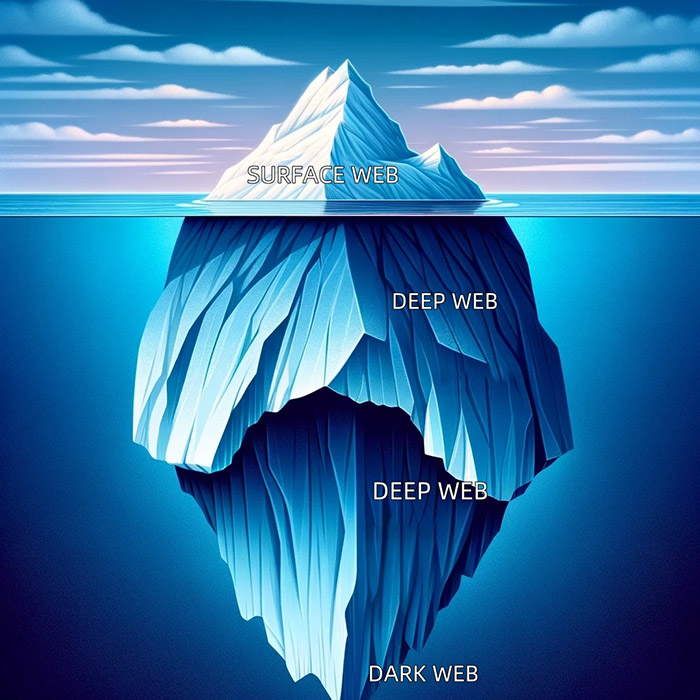
Do you feel like you have access to everything possible once you open a web browser and go to a search engine? Well, you are only skimming the surface. It’s estimated that less than 10% of the web is open , while the rest is hidden. This visible part of the internet is called the surface web, comprising websites accessible to anyone: online media, social networks, public sites, etc., everything available through a simple Google, Bing, DuckDuckGo, Yandex or other search engine requests.
Then, there is the deep web, making up the vast majority (over 90%) of the content available on the Net . This content is not accessible through a simple search engine query, as they do not index it. It often includes private information and databases meant only for specific groups of people: professional intranets, personal medical files, company data, universities, public administrations, government services, etc. You need to know the exact URL of these websites to access them, and they can also be password-protected.
The last layer is what particularly interests us here: the Dark Web. This represents a small portion of the deep web but with its own specificities. It’s more difficult to access because, unlike the deep web, you need a special browser to visit a site hidden in the dark web. The most well-known is undoubtedly Tor. The URLs of dark web pages are regularly changed to avoid surveillance and are very different from the URLs we are used to. They usually consist of a random mix of letters and numbers, ending with a different suffix than the traditional .com, .net, .org or .ai. On Tor, sites end with .onion, for example.
To simplify and symbolize what these three components of the web represent, the iceberg metaphor is commonly used in this regard. The surface web is the visible part of the iceberg, while the deep web is the submerged part. The dark web, on the other hand, is the deepest zone of this submerged part. Similarly, Tor stands for The Onion Router, referring to the web's multiple layers, like an onion.
Why Dig Your Toe into the Dark Web?
Due to the lack of control and featuring anonymity, the dark web inevitably hosts numerous illegal activities. However, it is also used by political dissidents or persecuted populations to exchange information without fear of identification. The dark web helps protect against surveillance measures implemented by governments, making it popular in countries where individuals are targeted for their political beliefs, sexual orientation, religion, etc.
The dark web is also a tool for accessing information that is usually inaccessible or for circumventing government censorship. Originally, the Tor project was created by U.S. intelligence and espionage agencies who wanted to use the internet to facilitate communication between their resources while maintaining a secure communication line.
Plus, the dark web can be useful for anonymously acquiring goods and services that are otherwise difficult to access.
Is the Dark Web Illegal?
Visiting the dark web or using Tor is not illegal in itself. It’s perfectly legal to use both. Clearly, if you decide to break the law and engage in illegal activities on the dark web, you will be subject to local legislation, just as you would be through the surface web. So, it all depends on how you use it, but in itself, you can surely visit the dark web.
Should You Use a VPN to Access the Dark Web?
Technically, there is no need to use a VPN to access the dark web. However, using Tor and visiting the dark web does not ensure 100% anonymous browsing. It can be easy to find your IP address and trace it back to you. Using a VPN can prevent your ISP or government from tracking you and even knowing that you are using Tor. Tor itself only encrypts your traffic.
If you want to protect your privacy and anonymity, it is recommended to use a VPN and turn on it before connecting to Tor.
The best VPN for Dark Web
Using a VPN with Tor can provide additional privacy and security benefits. To ensure your online privacy and security, choosing a trusted VPN provider is crucial. Here are some of the best VPNs below:
- CyberGhost
CyberGhost is available on all major platforms such as Windows, Linux, macOS, Android, iOS, Smart TV and more. This VPN is quite generous as it allows simultaneous connections on a maximum of 7 devices. A subscription lets you connect to any of the 5700 servers in 90 countries. CyberGhost VPN also guarantees fast browsing, streaming, and downloading speeds (Peer-to-Peer is supported), all without any bandwidth limits.
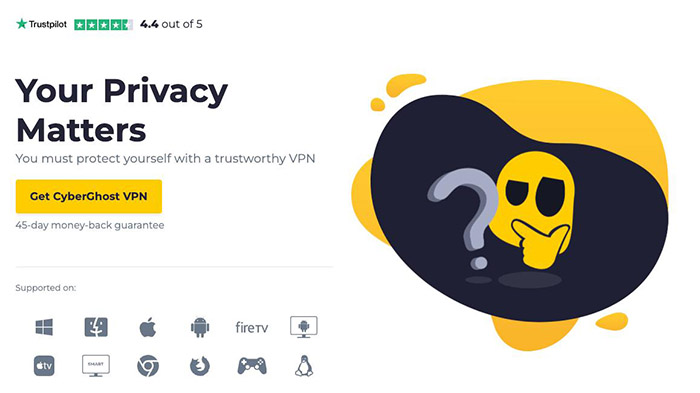
Remarkably, the service does not compromise on security. It uses AES-256 encryption and protocols such as OpenVPN, L2TP-IPsec, and PPTP to ensure anonymity and the security of payments, banking transactions and dark web browsing. Naturally, there is no storage of connection logs on the servers; these are not recorded anywhere. There is also protection against DNS and IP leaks, as well as an automatic emergency stop feature in case of loss of VPN connection to prevent data leaks.
- NordVPN
With more than 5600 servers across 60 countries, you can access the dark web that will not indicate your real location. Due to its large fleet of servers, there is no network congestion, so you can enjoy fast browsing, do research and access other content on the dark web smoothly.
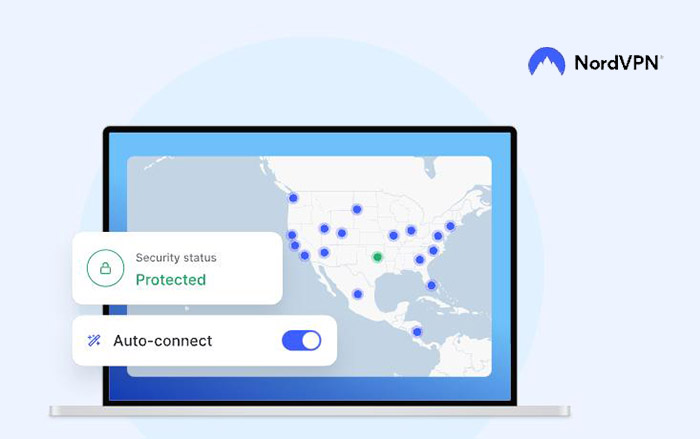
NordVPN is also a benchmark in terms of security. Based in Panama, it adheres to a strict personal data protection policy and does not log the connection and browsing activities of its users. It uses 256-bit encryption technology to prevent any interception attempts by third parties. Also, it includes protocols like OpenVPN and IKEv2, protecting against DNS leaks or when connecting to an unsecured Wi-Fi network.
- Falcon VPN
If you want to protect your privacy and security while accessing the dark web on your Android smartphone, a reputable VPN service like Falcon VPN can add an extra layer of privacy by hiding your IP address from the Tor entry node. It can encrypt your internet connection, keep your online activities private, and allow you to access geo-restricted content.
Falcon VPN uses industry-standard AES-256 encryption to protect you against hackers and snoopers. So, if your primary goal is privacy and security for everyday dark web use on your phone, then consider Falcon VPN, with its emphasis on privacy and no-log policy, could be a good choice.
How to Access the Dark Web Safely and Securely?
Now, let's get to the heart of the matter. We will show you how you can access the dark web in a few simple steps. You don't need to be a tech geek. The process is accessible to everyone.
Step 1. Connect to a VPN
As mentioned earlier, this step is optional. However, we still suggest using a VPN in conjunction with the Tor browser. This can enhance privacy and security significantly when accessing the dark web.
Step 2. Launch Tor Browser
It's time to download and install a browser that allows access to the dark web. Forget Chrome, Firefox, Opera, Safari, Edge, etc.; none of them are suitable. In our demonstration, we will use Tor Browser, the most well-known solution, to access the dark web.
Just visit the official Tor Project site from any other browser and click on the “Download Tor Browser” button on the home page to start the download. You will first choose which operating system you want to install Tor for, with four options available: Windows, macOS, Linux, and Android. You can also download the alpha version of the software instead of the stable version, but it is better to opt for the latter to avoid potential bugs and performance issues.
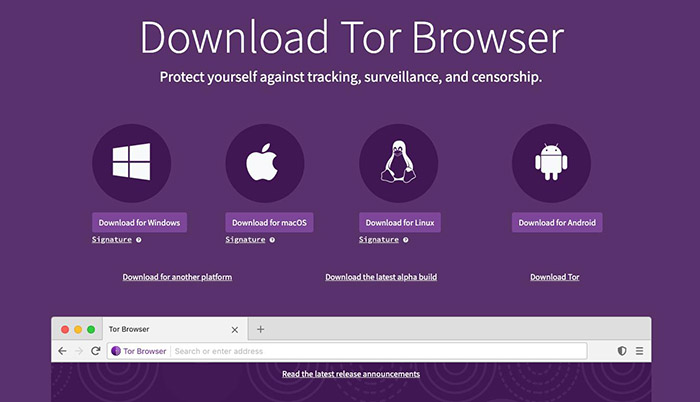
Once downloaded, install the browser like any other application, and follow the on-screen steps: language choice, installation folder, etc., and voila, you can now launch Tor.
At the first start, you are invited to connect directly or to configure the platform. In most scenarios, connecting without configuration is sufficient. However, you must select "Configure" if you are connecting from a private network that requires a proxy or if you are in a country that censors Tor, like Russia, Turkey, or Egypt. You then need to manually adjust the network settings.
Once connected, you access the Tor interface. If you are a Mozilla Firefox user, you should not be too disoriented, as Tor is based on it. By default, DuckDuckGo is the proposed search engine, which works exactly like on other browsers: it’s not what will allow you to get on the dark web.
Step 3. Access the Dark Web
Now, let’s learn how to visit hidden .onion websites, only accessible through Tor. You must type the complete URL address of the site to get there. If you do not know any .onion URLs, you have the option to search for them on the web or by visiting a directory listing dark web pages. Here are some Onion sites that can be useful.
- The Hidden Wiki is one of the most well-known and can be seen as the Wikipedia version of dark web sites.
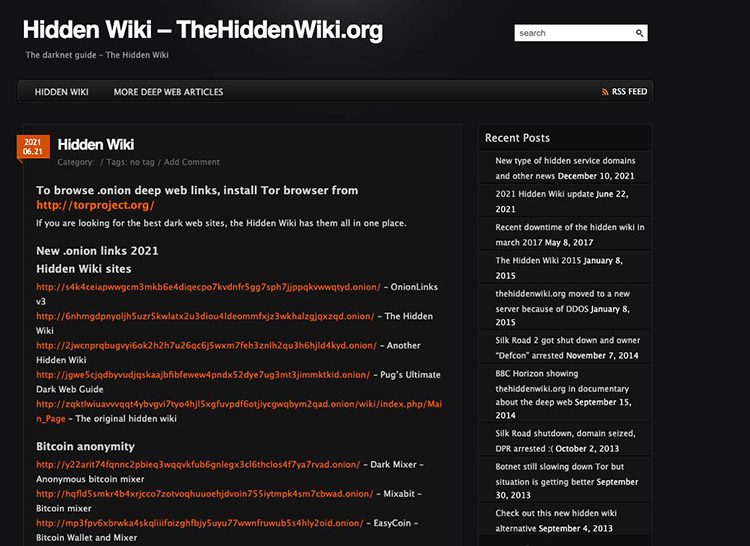
- TorLinks
- SecureDrop
- Not Evil
- Ahmia
- Candle
If you want to get the exact Onion site links, you can check out these articles:
The Best Onion and Tor Sites in 2024 >>
Top 21 .onion websites from the depths of the dark web >>
You must open these sites through Tor. Don’t worry if the browser is a bit slow. It’s the price to pay for a secure, encrypted connection, which must take detours before reaching you. In any case, you now have all the keys to start exploring the dark web.
One last reminder: not all sites, services, and files you can find on the dark web are legal, so be careful with the content you access. And so as the internet, watch out for malware and do not download files from an unverified source.
The Bottom Line
Accessing the dark web is not actually a complicated process, though it can take time to find the hidden sites that are below the iceberg. VPNs, Tor, and .onion address directories are some of the basics we have covered to help you start your experience on the Dark Web!


